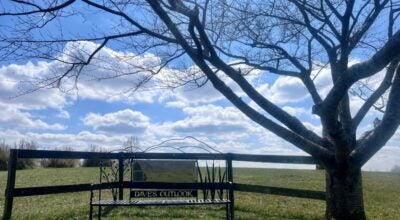Hay shortage: drought hits equestrian community
Published 11:00 pm Wednesday, December 26, 2007
I spoke with Don Williams at The Hay Rack and he filled in with some facts. He confirmed that because of the lack of rain, local hay is hard to get. Regular grass/fescue or a timothy blend runs customers from $6.00-$9.00 per square bale. Horse owners bought the same quality hay last year for about $3.00-$6.00 per bale. Local feed stores must order the hay from out of the area by the tractor trailer load&ellip; pay four men to unload and stack the hay (about a day&squo;s work) and have a safe, weatherproof, noncontaminable area to store it. (Just last month someone stole 100 bales out of his storage.) Right now, he feels it&squo;s more profitable to stock compressed hay from Washington State&ellip; why?&bsp; Compressed hay has more bang for the buck, packing more protein and nutrients in each compressed square bale. It costs Don around $6,000 in freight to get it here but he thinks it&squo;s worth the effort and the price. Last year he was selling compressed hay for $11.00 per square bale, now they cost $15.
Local round bales are almost impossible to buy. If farmers have them they don&squo;t have extra. Round bales of hay usually sell around here for about $35, delivered to your farm. Local feed stores are out of round bales&ellip; why? The drought. Round bales are available in Texas for $30 each. Want to buy some? A tractor trailer holds about 27 rounds&ellip; Let&squo;s estimate the round bales are 1,300 miles away and current freight rates are (at the bare minimum) $3.00 per mile&ellip; We would end up paying at least $175 for each round bale&ellip; not such a good deal. (And if you are not a horse person I need to tell you that round bales of hay are not the highest quality of nutritional value for your animal).
Because of the drought, feed companies are feeling the heat. Crops in the Southeast couldn&squo;t be harvested and/or planted and harvested crops didn&squo;t yield sufficiently, raising the price of grains we feed to our animals. Beets are a winter harvest crop and the outlook is grim&ellip; look for beet pulp to go up in price or a shortage thereof. Last year 50 lb. bags of oats were selling for around $5.00 a bag; now the same bag sells for $12.00.&bsp; Southern States has created a new line of Reliance Horse Feed, combining the 10% protein and 12% protein and making an 11% protein blend of feed to cut costs.
The long term effects of the drought are another worry. If our area doesn&squo;t receive adequate rain, winter grasses won&squo;t thrive and spring cuttings will be sparse. Many local hay growers weren&squo;t able to seed winter grasses this year because of the lack of rain. So it looks like the hay shortage will continue through spring into early summer.
Horse owners are currently dealing with overgrazed pastures and in effect the need to feed more hay to supplement this loss. Now what are the holidays going to bring to those horses whose owners don&squo;t have a lot of extra cash? What about local horse rescue organizations?
The Tryon Daily Bulletin is currently researching this situation and plans to run a series of articles about how the drought is affecting all of us. If you have any comments or stories, please email loneoaktryon@gmail.com
Share the
holiday spirit and donate to your local equine rescue league… there&squo;s no better time than the present!
Suzanne
South Carolina Awareness and Rescue for Equines, 312 Shetland La., Lexington, SC 29073 803 422-6585
Hope for Horses, PO Box 1449, Leicester, NC 28748 www.HopeforHorses.org
Horse Protection Society, 2135 Miller Rd. China Grove, NC 28023 www.horseprotection.org





